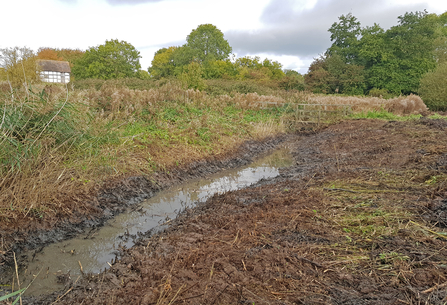A shallow scrape has been created and a field ditch has been widened at the headwaters of the Barbourne Brook at Lower Smite Farm, headquarters of Worcestershire Wildlife Trust.
The scrapes will help to hold back water and slow the flow in heavy rainfall events whilst also attracting wetland wildlife such as frogs, newts, dragonflies and birds.
Jasmine Walters, the Trust’s Wildlife and Farming Officer, explained “This is a great piece of work that demonstrates how we can help both people and wildlife with relatively simple solutions that work with nature.
“Works like this are something that many landowners can do on their land to help alleviate the impacts of flooding and drought.
“The scrapes will help to hold water and slow the flow of water down the Barbourne Brook, helping to reduce problems for residents in Worcester. At the same time, they’ll provide a range of wet and muddy habitats for wildlife. Many species of wildlife are adapted to ephemeral water bodies so, although they may not hold onto as much water as deeper ponds in dry conditions, they’ll still be invaluable.”

